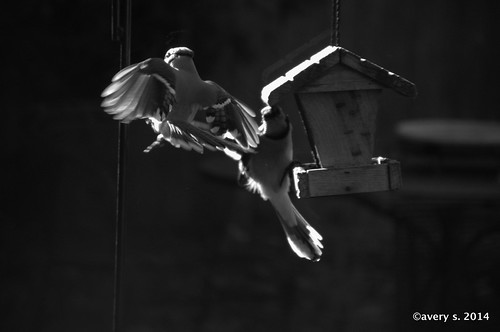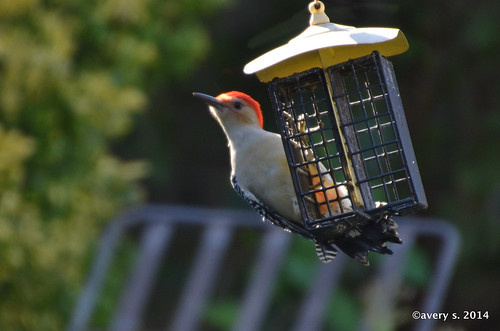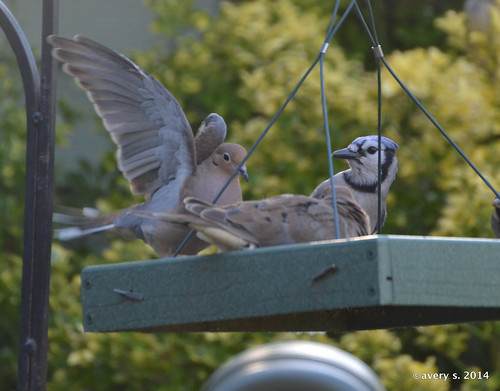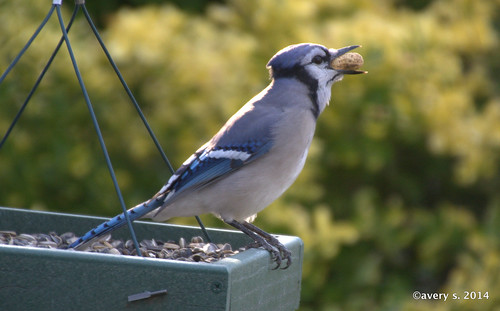Once again, it has returned to that magical time of year, Christmas Bird Count season. This season has a special meaning for me, which I'll get into later. But right now, let's take a quick look at the history of the Christmas Bird Count.
Up till the late 19th century, a Christmas tradition was the side hunt. After Christmas dinner, rich guys with guns would go out, form teams, and see who could shoot the more birds in an allotted amount of time. These guys were not discriminating either: if it had feathers, they wanted to kill it. What's more, they had no real need for dead birds and often disposed of many of the corpses afterwards.
In 1900, Frank Chapman proposed a more humane activity. It was very similar to the side hunt, except for one important detail: after being seen, the birds were recorded, rather than shot. The first year, twenty-seven people participated. This became the Christmas Bird Count, which the National Audubon Society now sponsors.
Counts are conducted in count circles of 15 miles or 24 kilometers. Teams split up to cover the entirety of the circle, then bring their records back to be compiled. That data, with exact numbers of how many of each species were found where, is sent back to the Audubon Society, where it is stored for scientific purposes.
The CBC proves that science can be fun. No, ignore that. The CBC proves that science can be really fun! Last year was my first year, and I still believe that experience inspired the transformation to a hard-core birder that occurred in the winter of 2013.
Now, it's been a year since then, and I have far more experience and passion in the field. So I'm going back. This year, I shall be counting on December 14, 2014, with circle NYQU, Queens County, NY. This count is organized by the Queens County Bird Club. The compiler is none other than the esteemed Corey Finger, writer for 10,000 Birds and now field guide author.
So wish us luck on December 14!
Up till the late 19th century, a Christmas tradition was the side hunt. After Christmas dinner, rich guys with guns would go out, form teams, and see who could shoot the more birds in an allotted amount of time. These guys were not discriminating either: if it had feathers, they wanted to kill it. What's more, they had no real need for dead birds and often disposed of many of the corpses afterwards.
In 1900, Frank Chapman proposed a more humane activity. It was very similar to the side hunt, except for one important detail: after being seen, the birds were recorded, rather than shot. The first year, twenty-seven people participated. This became the Christmas Bird Count, which the National Audubon Society now sponsors.
Counts are conducted in count circles of 15 miles or 24 kilometers. Teams split up to cover the entirety of the circle, then bring their records back to be compiled. That data, with exact numbers of how many of each species were found where, is sent back to the Audubon Society, where it is stored for scientific purposes.
The CBC proves that science can be fun. No, ignore that. The CBC proves that science can be really fun! Last year was my first year, and I still believe that experience inspired the transformation to a hard-core birder that occurred in the winter of 2013.
Now, it's been a year since then, and I have far more experience and passion in the field. So I'm going back. This year, I shall be counting on December 14, 2014, with circle NYQU, Queens County, NY. This count is organized by the Queens County Bird Club. The compiler is none other than the esteemed Corey Finger, writer for 10,000 Birds and now field guide author.
So wish us luck on December 14!
 |
| Last year's CBC |







